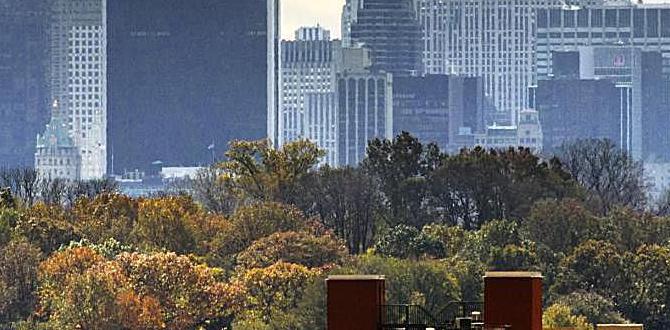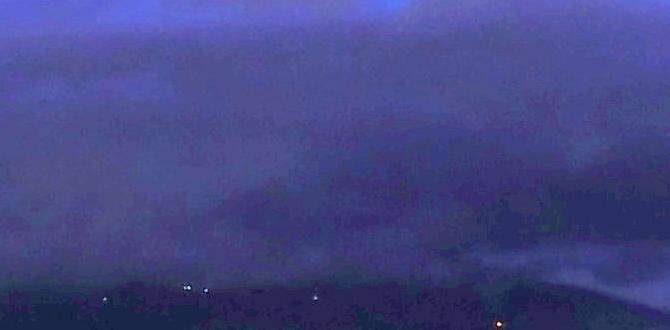Basque Country Mid-Range Travel Guide: Essential Tips
Travel smarter in the Basque Country on a mid-range budget with these essential tips for seamless planning, comfortable stays, delicious food, and unforgettable experiences. Maximize your fun and minimize stress with our practical advice.
The Basque Country is a dream destination, but planning a trip can feel a bit overwhelming, especially when you’re aiming for a comfortable, mid-range experience. You want to see the stunning coastlines, taste the incredible pintxos, and soak in the unique culture without breaking the bank. Maybe you’re worried about where to stay, how to get around, or how to even begin to navigate all the amazing food options. Don’t worry, we’ve got you covered! This guide is designed to simplify your planning, ensuring your Basque adventure is both memorable and stress-free. We’ll walk you through everything step-by-step, so you can relax and enjoy the journey.
Discovering the Basque Country on a Budget: Your Mid-Range Guide
The Basque Country, a vibrant region straddling the border of northern Spain and southwestern France, offers a rich tapestry of culture, stunning landscapes, and world-renowned cuisine. From the shimmering beaches of the Cantabrian coast to the rolling green hills inland, this region promises an unforgettable travel experience. For those seeking a perfect blend of comfort, authentic experiences, and sensible spending, a mid-range travel approach is ideal. It allows you to enjoy the best of the Basque Country without the luxury price tag, making it accessible and incredibly rewarding.
Why Mid-Range Travel Works for the Basque Country
Mid-range travel is all about finding that sweet spot – enjoying high-quality experiences without compromising on comfort or authenticity, while keeping an eye on your budget. The Basque Country is exceptionally well-suited for this travel style. It’s a region that naturally offers fantastic value. You can savor exquisite pintxos, which are typically affordable small bites, and enjoy delicious meals in local taverns without the high cost of formal restaurants. Accommodation options range from charming boutique hotels to comfortable, well-located apartments, offering great value. Public transport is efficient, making it easy to explore cities like Bilbao and San Sebastián without needing expensive private transport. This approach ensures you experience the true essence of the Basque Country, from its lively culinary scene to its breathtaking natural beauty, all within a manageable budget.
Planning Your Basque Adventure: Key Considerations
Getting your Basque Country trip right starts with smart planning. Focusing on mid-range travel means being strategic about where you allocate your funds. This isn’t about cutting corners; it’s about making conscious choices that give you the best experience for your money. From selecting the right time to visit to understanding local transport, a little foresight goes a long way.
Best Time to Visit for Mid-Range Travelers
The shoulder seasons often offer the best combination of pleasant weather and fewer crowds, which can translate to better prices for accommodation and flights.
Spring (April-May): The landscape is lush and green, wildflowers are in bloom, and the weather is generally mild, perfect for exploring cities and hiking. Tourist numbers are lower than in summer.
Autumn (September-October): This is another beautiful time to visit. The weather is often still warm and sunny, the autumn colors are spectacular, and you’ll find more relaxed atmosphere and potentially better deals as the peak summer season winds down.
Summer (June-August): While popular and vibrant, this is peak season. Expect higher prices and larger crowds, especially in coastal areas. If you must travel in summer, booking well in advance is crucial.
Winter (November-March): This is the low season. While some coastal towns can be quiet and the weather cooler, it’s a great time for city breaks, enjoying indoor culture, and finding the lowest prices.
Essential Packing for Comfort and Convenience
Packing smart is crucial for any traveler, and for a mid-range trip to the Basque Country, comfort and practicality are key. Think layers, comfortable walking shoes, and essentials that can serve multiple purposes.
Comfortable Walking Shoes: You’ll be doing a lot of walking, whether it’s through charming city streets or along coastal paths.
Layers: The weather can be unpredictable, so pack layers like t-shirts, sweaters, and a waterproof jacket.
Versatile Clothing: Choose items that can be dressed up or down. This saves luggage space and allows you to adapt to different occasions, from a casual pintxos crawl to a slightly more formal dinner.
Reusable Water Bottle: Stay hydrated and reduce plastic waste. Many cities have public fountains.
Small Backpack or Daypack: For carrying essentials during daily excursions.
Travel Adapter: If you’re coming from outside Europe.
Personal Care Items: Consider packing travel-sized toiletries. For longer trips or if you have specific needs, bringing personal items like adult or child diapers can ensure comfort and reduce stress. Options like Depend Fit-Flex Underwear or similar products are designed for discreet comfort and absorbency, making travel much easier for those who need them.
Getting Around the Basque Country: Smart Transportation
Navigating the Basque Country is straightforward and budget-friendly, especially with its excellent public transport network. For mid-range travel, relying on trains, buses, and local transport is a smart way to save money and experience the region like a local.
Inter-City Travel
Trains (Renfe and Euskotren): Spain’s national rail service, Renfe, connects major cities. Euskotren is a regional rail network that’s particularly useful for reaching coastal towns and smaller villages. Booking tickets in advance, especially for longer journeys, can often secure better prices.
Buses (Various Companies): Companies like ALSA operate extensive networks across Spain. Buses are often a more affordable option and can reach destinations not served by trains. They are comfortable for medium-length journeys.
Within Cities
Walking: Many Basque cities, like San Sebastián and Bilbao, have compact, walkable centers. This is the best way to discover hidden corners and soak in the atmosphere, and it’s free!
Public Buses: Both Bilbao and San Sebastián have efficient and affordable bus systems. Consider purchasing a multi-trip ticket if you plan to use them frequently.
Trams (Bilbao): Bilbao has a modern tram system that’s useful for getting around the city center and waterfront areas.
Taxis & Ride-Sharing: Available for convenience, but can add up. Use them for shorter distances or when time is of the essence.
Accommodation Options for Mid-Range Comfort
Finding that perfect place to stay that balances comfort, location, and price is a hallmark of mid-range travel. The Basque Country offers a variety of options to suit different preferences.
Types of Mid-Range Accommodation
Boutique Hotels: These often offer unique charm, personalized service, and comfortable amenities without the hefty price tag of luxury hotels. They are usually well-located.
Guesthouses (Pensiones & Hostales): A step up from hostels, these offer private rooms, sometimes with en-suite bathrooms, and are a very budget-friendly option. Don’t confuse “hostal” with “hostel” in Spain; hostales are typically simpler, family-run inns.
Apartment Rentals (Airbnb, Booking.com): Renting an apartment can be cost-effective, especially for families or longer stays. It also provides the flexibility to cook some of your own meals, saving on dining costs. Look for apartments in residential neighborhoods for a more local feel and potentially better prices.
Mid-Range Chain Hotels: Several familiar hotel chains offer reliable comfort and amenities at reasonable prices, often located near transport hubs or city centers.
Tips for Booking Accommodation
Book in Advance: Especially during peak season or for popular spots like San Sebastián.
Consider Location: Staying slightly outside the absolute city center but near public transport can offer better value.
Read Reviews: Look for feedback on cleanliness, comfort, and staff helpfulness.
Be Flexible with Dates: If your travel dates are flexible, you might snag better deals during the week or in shoulder seasons.
Savoring Basque Cuisine: Pintxos and Beyond on a Budget
The Basque Country is a gastronomic paradise, famous for its pintxos (small snacks, similar to tapas), fresh seafood, and cider houses. Eating well here doesn’t have to be expensive. The key is to embrace the local culture of eating and socialize.
The Art of Pintxos
Pintxos are a way of life in the Basque Country, especially in San Sebastián. They are often displayed on the bar and range from simple pieces of bread topped with ingredients to more elaborate creations.
How to Enjoy Pintxos: Wander through the old town (Parte Vieja) of San Sebastián or explore areas like the Casco Viejo in Bilbao. Hop from bar to bar, ordering one or two pintxos and a drink (a small glass of wine, beer, or txakoli wine) at each. The cost per pintxo typically ranges from €1.50 to €4.
Cost-Saving Tip: Enjoying a “pintxo crawl” for dinner is a fantastic and relatively inexpensive way to sample a wide variety of local flavors without committing to a full, expensive meal. A few pintxos and a drink at several bars will easily fill you up for a reasonable price.
Affordable Dining Options
“Menu del Día” (Menu of the Day): Many restaurants offer a set lunch menu that includes a starter, main course, dessert, and a drink (wine, water, or beer) for a fixed price, usually between €12-€20. This is an excellent way to enjoy a substantial, delicious meal at a great value. This is typically available on weekdays.
Local Markets: Visit markets like Mercado de la Bretxa in San Sebastián or Mercado de la Ribera in Bilbao. You can find fresh produce, local cheeses, cured meats, and often affordable food stalls or small restaurants within the market.
Cider Houses (Sidrerías): Especially popular in Gipuzkoa (the province of San Sebastián), sidrerías offer a traditional Basque dining experience. You traditionally eat grilled steak and cod omelets, all washed down with cider poured from a height. While can be pricier, some offer set menus.
The Spanish government provides some excellent resources for travelers wanting to understand culture and cuisine better, including the national tourism portal, Spain.info.
Must-See Attractions and Experiences (Mid-Range Friendly)
The Basque Country is full of incredible sights and activities that don’t require deep pockets. Focusing on natural beauty, engaging with local culture, and exploring vibrant cities will give you an unforgettable trip.
Cultural Highlights
Guggenheim Museum Bilbao: While the entry fee is a significant expense, consider if it aligns with your interests. The building itself is an architectural marvel, and the surrounding modern city development is worth exploring. Look for reduced entry days or special offers if available.
Old Towns (Casco Viejo/Parte Vieja): Simply wandering through the narrow, historic streets of Bilbao and San Sebastián is an enriching experience. Admire the architecture, soak in the atmosphere, and pop into local shops.
San Telmo Museum (San Sebastián): This museum offers insights into Basque culture, history, and art, often at a more accessible price point than larger international museums.
Artxanda Funicular (Bilbao): For a small fee, this funicular offers panoramic views of Bilbao and the surrounding landscape. It’s a budget-friendly way to get a stunning perspective of the city.
Natural Wonders
La Concha Beach (San Sebastián): Enjoy the iconic crescent-shaped beach. Relaxing, sunbathing, and strolling along the promenade are free activities.
Monte Urgull and Monte Igueldo (San Sebastián): Hike up these hills for breathtaking views of the bay and the city. Monte Igueldo has a charming old-fashioned amusement park at the top, which can be a fun, albeit not entirely free, experience.
Urdaibai Biosphere Reserve: This stunning natural area offers hiking trails, birdwatching opportunities, and beautiful coastline. It’s a great day trip for nature lovers.
Gaztelugatxe: Made famous by Game of Thrones, this dramatic coastal setting with its winding staircase to a hermitage is visually spectacular. Reaching it involves a hike and is free to explore the exterior and surrounding paths.
Unique Basque Experiences
Basque Cider Houses (Sidrerías): Even if you don’t go for a full meal, visiting a sidrería during the ‘txotx’ season (typically January to April) to taste cider directly from the barrels is a unique cultural immersion.
Local Festivals: If your visit coincides with a local festival, dive in! These offer free music, dancing, and a chance to experience authentic Basque celebrations.
Pilgrimage Paths (Camino de Santiago): Parts of the famous pilgrimage route pass through the Basque Country. Walking a segment of the trail offers a unique perspective and a connection to history.
Sample Mid-Range Itinerary: A Taste of Basque Country
This sample itinerary focuses on two main hubs, Bilbao and San Sebastián, offering a blend of culture, cuisine, and coastal beauty within a mid-range budget.
Day 1-3: Bilbao – Art, Culture & Modernity
Accommodation: A comfortable apartment rental or a well-rated mid-range hotel in an area like Ensanche or near the Abando station.
Day 1: Arrive in Bilbao. Check into your accommodation. Explore the Ensanche district, admire the architecture, and enjoy your first pintxos experience. Consider a walk along the Nervión River.
Day 2: Visit the Guggenheim Museum (consider the exterior and surrounding areas if budget is tight). Ride the Artxanda funicular for panoramic views. Explore the Casco Viejo (Old Town), including Plaza Nueva and Santiago Cathedral. Enjoy a “Menu del Día” for lunch.
Day 3: Day trip to the coast. Take the Euskotren to the charming fishing village of San Juan de Gaztelugatxe (check accessibility and any potential entry fees for specific parts). Alternatively, visit the coastal town of Bermeo. Enjoy seafood for dinner.
Day 4-6: San Sebastián – Culinary Capital & Coastal Charm
Transport: Take a bus or Euskotren from Bilbao to San Sebastián (approx. 1.5 hours).
Accommodation: Look for apartments in neighborhoods like Gros or Egia, or a mid-range hotel slightly away from the absolute beachfront but still within walking distance.
Day 4: Arrive in San Sebastián. Settle into your accommodation. Take a stroll along La Concha beach and promenade. Explore the Parte Vieja (Old Town) and embark on a pintxos crawl for dinner.
Day 5: Hike up Monte Urgull for city and bay views. Explore the Botanical Garden or the Aquarium (entry fee applies). Visit the Mercado de la Bretxa. Enjoy another evening of pintxos.
Day 6: Take a local bus or walk to explore the vibrant Gros neighborhood. Consider a visit to the Chillida Leku Museum (requires transport, check entry fee and opening times) for unique sculptures. Enjoy a final Basque meal, perhaps trying “Gibelurdinak” (mushrooms) or “Txangurro” (spider crab).
This itinerary is flexible and can be adapted based on your interests and pace. The focus is on utilizing public transport, enjoying affordable culinary experiences, and soaking in the natural and cultural richness of the region.
Budget Breakdown: An Estimate for Mid-Range Travel
To help you visualize costs, here’s a rough estimate for a 6-day trip for one person, focusing on mid-range spending in the Basque Country. Prices are approximate and can vary based on season, booking in advance, and personal choices.
| Category | Estimated Daily Cost (per person) | Notes |
| :—————- | :——————————– | :————————————————————————————————————————————————————————————————– |
| Accommodation | €60 – €100 | Based on a share of a mid-range hotel room, guesthouse, or an apartment rental. |
| Food & Drink | €40 – €60 | Mix of pintxos, “Menu del Día” lunches, some self-catering, and casual dinners. |
| Transport | €10 – €25 | Includes inter-city buses/trains (averaged over the trip), local transport (buses, trams). |
| Activities | €15 – €30 | Average cost for one major attraction (e.g., Guggenheim entry, funicular, museum) plus smaller activities, spread over the days. Many natural sights and city exploration are free. |
| Miscellaneous | €10 – €15 | Souvenirs, coffee, snacks, personal items. (This category can be adjusted significantly based on personal spending habits). |
| Total Per Day | €135 – €230 | This is a guideline. You can spend less by opting for more self-catering, fewer paid attractions, and simpler accommodation. You can spend more by choosing nicer hotels or more fine dining. |
Total for a 6-Day Trip (per person): Approximately €810 – €1380
Remember, this is a flexible guide. If you’re traveling with family, an apartment rental might become more cost-effective per person. For those who require specific personal care items like disposable diapers for adults or children, budgeting for







